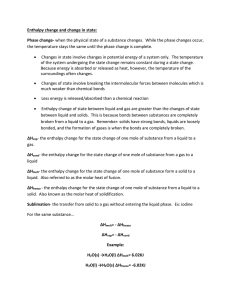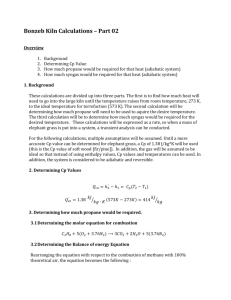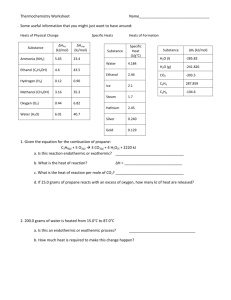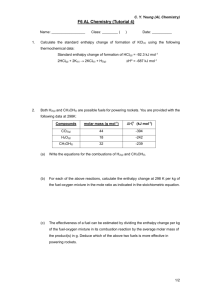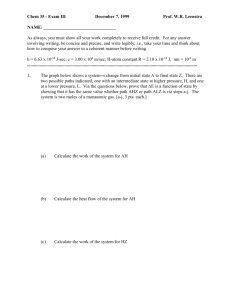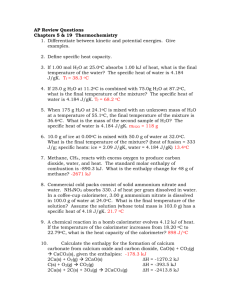5.5Enthalpy of Formation
advertisement
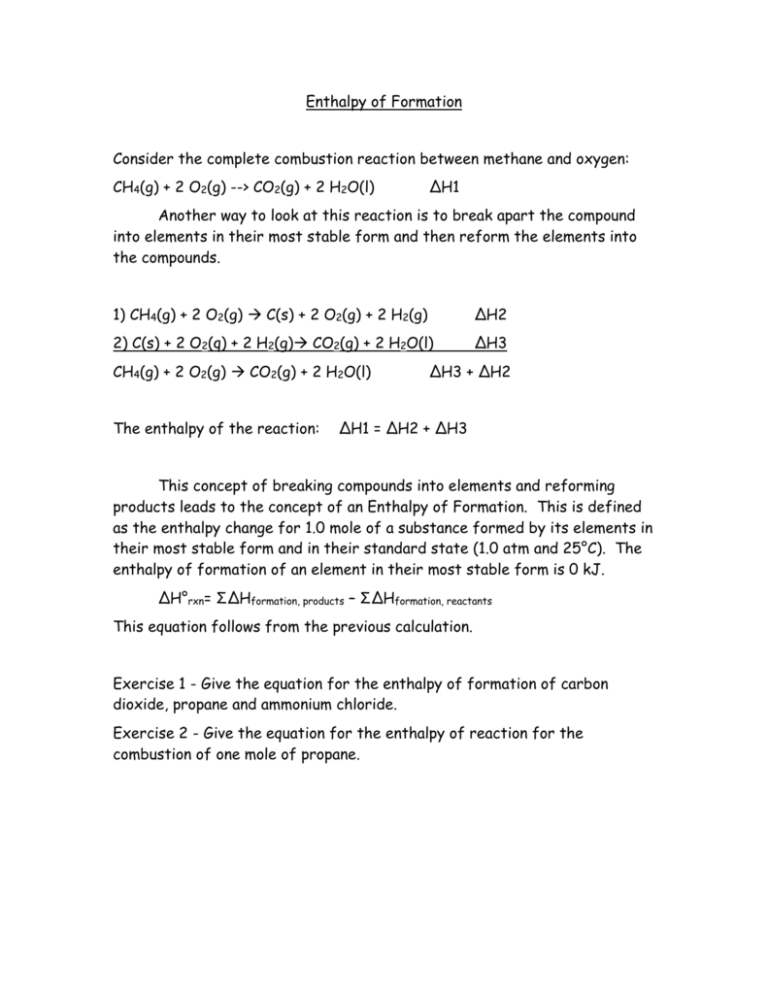
Enthalpy of Formation Consider the complete combustion reaction between methane and oxygen: CH4(g) + 2 O2(g) --> CO2(g) + 2 H2O(l) ΔH1 Another way to look at this reaction is to break apart the compound into elements in their most stable form and then reform the elements into the compounds. 1) CH4(g) + 2 O2(g) C(s) + 2 O2(g) + 2 H2(g) ΔH2 2) C(s) + 2 O2(q) + 2 H2(g) CO2(g) + 2 H2O(l) ΔH3 CH4(g) + 2 O2(g) CO2(g) + 2 H2O(l) The enthalpy of the reaction: ΔH3 + ΔH2 ΔH1 = ΔH2 + ΔH3 This concept of breaking compounds into elements and reforming products leads to the concept of an Enthalpy of Formation. This is defined as the enthalpy change for 1.0 mole of a substance formed by its elements in their most stable form and in their standard state (1.0 atm and 25°C). The enthalpy of formation of an element in their most stable form is 0 kJ. ΔH°rxn= ΣΔHformation, products – ΣΔHformation, reactants This equation follows from the previous calculation. Exercise 1 - Give the equation for the enthalpy of formation of carbon dioxide, propane and ammonium chloride. Exercise 2 - Give the equation for the enthalpy of reaction for the combustion of one mole of propane.


